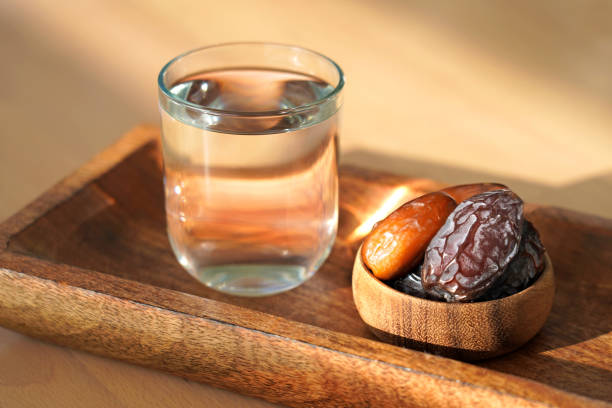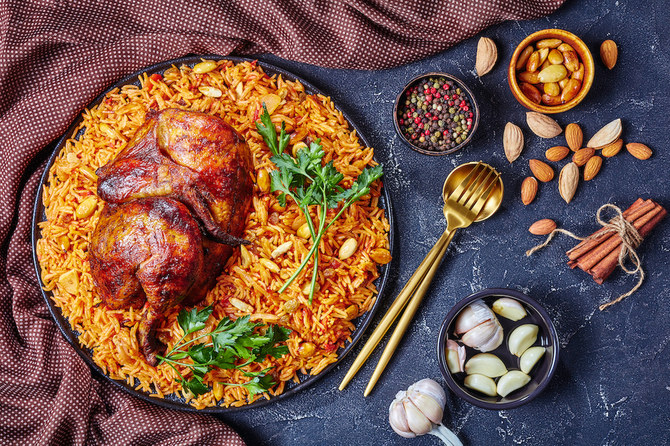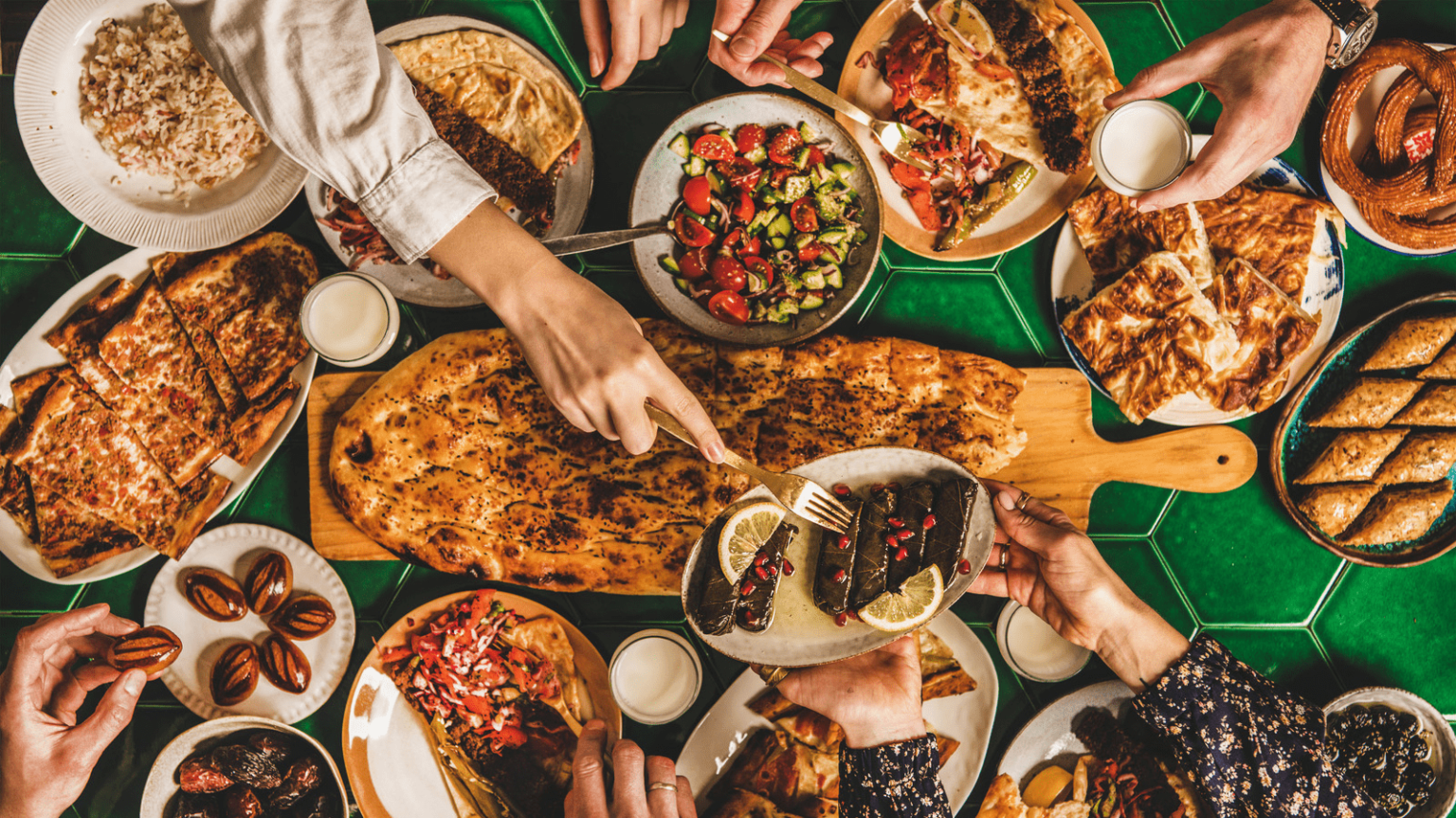Ramadan food customs and dishes in Saudi Arabia represent a unique blend of cultural tradition, religious values, and regional flavor. This sacred month is not just about fasting, but also about sharing, gathering, and cherishing traditional meals with family and the community. As the sun sets and the Maghrib call to prayer echoes, homes across the country become filled with the aroma of age-old recipes passed down through generations.
Let’s explore the most cherished Ramadan food customs and dishes in Saudi Arabia that bring people together during this holy month.
1. Dates and Water – A Timeless Tradition

At the heart of Ramadan food customs in Saudi Arabia is the act of breaking the fast with dates and water, just as the Prophet Muhammad (peace be upon him) practiced. Dates are not only easy to digest after long hours of fasting, but they are also packed with nutrients that quickly replenish energy.
The tradition is more than just nutritional. It is a spiritual moment. Many families place a plate of dates at the center of their table, starting the Iftar with Bismillah, followed by water or laban (a salty yogurt drink). These small steps carry deep meaning.
2. Popular Iftar Dishes that Rule Every Table
After breaking the fast, Saudis enjoy a variety of flavorful dishes that combine local spices, rice, meat, and legumes. Some of the most loved Ramadan dishes in Saudi Arabia include:
- Kabsa – A rice dish cooked with chicken or lamb and fragrant spices like cinnamon, cardamom, and cloves.
- Samboosa – Triangular pastries filled with spiced meat or vegetables, inspired by South Asian and Middle Eastern cuisines.
- Harees – A hearty porridge made from wheat and meat, often served with ghee.
- Jareesh – Crushed wheat cooked with meat or chicken and mild spices, a Bedouin delicacy.
These dishes symbolize generosity and hospitality. Many families cook large portions to share with guests and neighbors, reflecting the community spirit of Ramadan.
3. The Role of Soups and Light Appetizers
During Ramadan in Saudi Arabia, soups play an essential role in helping the stomach adjust to eating after fasting. Lentil soup (shorbat adas), chicken broth, or oatmeal-based soup is usually served before the main course.
Alongside soup, you will often find:
- Fresh vegetable salads
- Pickled olives and cucumbers
- Fatayer (mini pies filled with spinach, cheese, or meat)
These light starters help prepare the body gently for heavier dishes, aligning with the healthy aspect of Ramadan food customs.
4. Suhoor – Fueling the Day Ahead
Suhoor is the pre-dawn meal, and it plays a vital part in Ramadan food customs and dishes in Saudi Arabia. This meal must be nutritious yet light, helping Muslims stay energized throughout the day of fasting.
Common Suhoor items in Saudi homes include:
- Ful medames – Cooked fava beans with olive oil, garlic, and lemon.
- Eggs, often prepared with local herbs or shakshuka-style.
- Flatbread with cheese, dates, or honey.
- Laban or milk for hydration.
Eating Suhoor is considered a blessed act in Islam, and Saudi families usually wake up an hour or so before dawn to eat together in calm, quiet reflection.
5. Communal Eating and Charity – A Core Part of Ramadan
One of the most beautiful aspects of Ramadan food customs in Saudi Arabia is the emphasis on community and charity. Many families invite neighbors or less fortunate individuals to share Iftar, especially on Fridays or the 27th night of Ramadan.
Local mosques and public squares often set up Iftar tents where volunteers distribute free meals, including rice, meat, bread, fruit, and drinks. This tradition enhances the spirit of unity and ensures no one breaks their fast alone.
6. Ramadan Sweets You Must Try
As Iftar winds down, it’s time for dessert. In Saudi Arabia, Ramadan sweets are indulgent and comforting. They are usually served with Arabic coffee (qahwa) or sweet tea.
Some famous desserts include:
- Luqaimat – Deep-fried dumplings coated in date syrup or honey.
- Basbousa – Semolina cake with coconut, sugar syrup, and sometimes nuts.
- Kunafa – A cheesy pastry soaked in sweet syrup and topped with pistachios.
These desserts are not only about satisfying a sweet tooth but also mark the festive side of Ramadan evenings.
7. Unique Regional Dishes in Saudi Arabia

Saudi Arabia is diverse in culture, and Ramadan food customs vary by region. For example:
- In the Western region (Hejaz), you’ll find dishes influenced by Yemeni and Egyptian cuisines.
- In the Eastern region, seafood-based dishes and rice with spices are common.
- In Riyadh and central areas, traditional Najdi dishes like matazeez (dough cooked in stew) are popular.
This regional variation brings richness to the overall Ramadan dining experience.
Final Thoughts: Food as a Spiritual and Cultural Anchor
Ramadan food customs and dishes in Saudi Arabia are not only about taste but also about identity, belonging, and faith. From the humble date to the elaborate Iftar spread, every element has spiritual depth and cultural meaning. Families come together, mosques overflow with generosity, and the aroma of spices tells a story that is uniquely Saudi yet shared by millions around the world.
As you explore or experience Ramadan in Saudi Arabia, let the food guide you into a world where faith and flavor live side by side.
Also Read – 7 Positive Healthy Food Trends Gaining Popularity in Saudi Arabia



